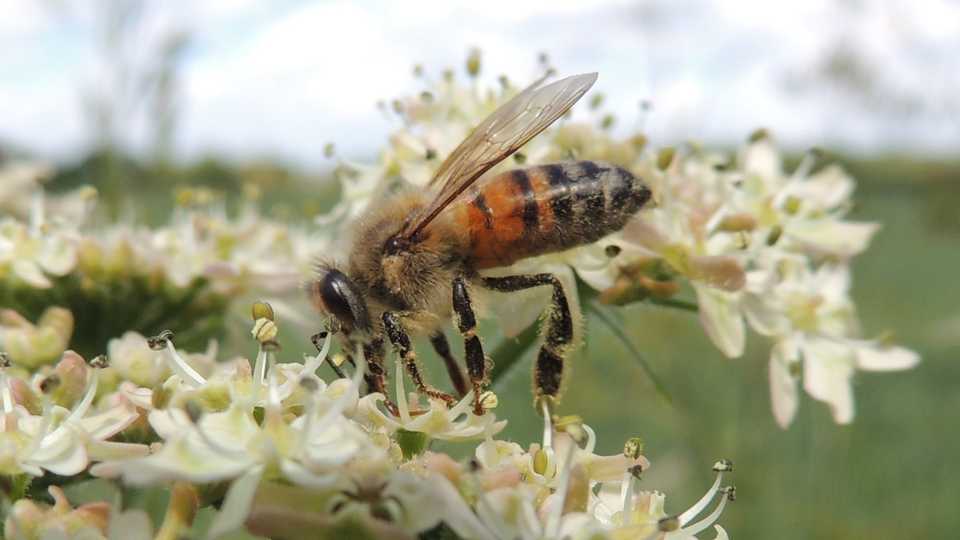Science News
Flying Insect Robot

A new robot was inspired by the visual technique that honeybees use to land.
It’s a bird, it’s a plane—it’s a flying robotic insect!
Imagine constant aerial monitoring of landscapes so farmers know precisely when to harvest crops, wildlife researchers have access to close-ups of rare species, and land managers have unprecedented high-resolution data at their fingertips. These are just a few of the applications arising for micro aerial vehicles (MAVs).
Last month, scientists published a design enhancement to these tiny drones that will significantly improve their data capture endurance.
Inspired by the “perch” of birds, bats, and real insects, the new technology enables MAVs to lengthen their missions by independently attaching to and launching from surfaces. Perching technology demands significantly less energy from MAVs—roughly three orders of magnitude less power than sustained flight.
Electroadhesives
Previous perching robots required landing sites with specific material properties. The new robot enables controlled perching and detachment on nearly any material—including glass, wood, and a natural leaf—with the use of electroadhesive technology.
How does it work? Scientists attached an electrostatic landing patch that distributes a static electric charge evenly across the MAV. The patch is made from foam to dampen the impact of landing and to ensure the robot won’t bounce off its target. To detach from a perch, the patch de-energizes, and the robot hovers in flight until it stabilizes.
The team of scientists tested the perching mechanism on different materials without cleaning them, to ensure the robot would adhere to dirty surfaces and successfully attach after being exposed to airborne debris.
Size Matters
Aerial robot flight is energetically expensive, particularly at small scales: endurance decreases as size diminishes.
“There’s a lot of benefits to using these types of [micro] robots…but the drawback is, they’re very inefficient at flying,” said Robert Wood, co-author of the paper. “When you perch though, you... can reduce power consumption dramatically, perhaps even down to zero. It’s an energy savings that hypothetically could substantially increase the mission lifetime for these types of robots.”
Electroadhesive patches and a flexible, energy-absorbing mount on the robot provide a lightweight solution and a physically simple perching mechanism. Together they weigh less than 15 percent of the robot’s total body mass.
Bio-Inspired
Perching technology is the latest example of how engineering can learn from nature. Like the creatures that inspired them, these MAVs are agile and compact. Operating several robots simultaneously could offer scientists access to study the most difficult places and species on Earth.
So the next time you see a dragonfly hovering in the air or a hummingbird landing on a tiny far-off branch, think of the technology they inspired!
Image: Orangeaurochs/Wikipedia